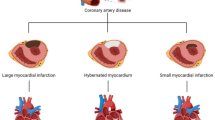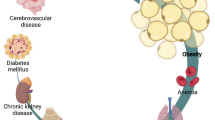Abstract
Background
In this study, we investigated the utility of the Model for End-stage Liver Disease excluding INR (MELD-XI) score in predicting short- and long-term mortality in elderly patients with non-ST elevation myocardial infarction (NSTEMI) who underwent coronary angiography (CAG).
Methods
In total, we analyzed 228 elderly NSTEMI patients above the age of 75. We used the modified 5-item frailty index and the Charlson Comorbidity Index (CCI) to assess the comorbidities. The MELD-XI score was calculated using the logarithmic relationship between the serum creatinine and total bilirubin.
Results
The median long-term follow-up was 530 [interquartile range (IQR) = 303–817] days and the short- and long-term mortality rates were 11.8% (n = 27) and 16.4% (n = 33), respectively. Patients who did not survive had a substantially higher MELD-XI score than those who did [10.1 (IQR = 7.8–15.1) vs. 4.5 (IQR = 1.9–6.9), p < 0.001, respectively]. Multivariable Cox regression analyses indicated that the MELD-XI score predicted both short- and long-term mortality independently. When the MELD-XI score, serum creatinine, and total bilirubin area under the curve (AUC) values were compared to predict long-term mortality, the MELD-XI score had the highest value (AUC: 0.833), followed by the serum creatinine (AUC: 0.741), and the total bilirubin (AUC: 0.723). The accuracy of the MELD-XI score was further tested with the GRACE risk score, which demonstrated noninferiority.
Conclusion
This was the first investigation which indicated that elderly NSTEMI patients with a high MELD-XI score had poor prognosis in the short- and long-term period.





Similar content being viewed by others
References
Alomari M, Bratton H, Musmar A et al (2019) Ticagrelor-induced diarrhea in a patient with acute coronary syndrome requiring percutaneous coronary artery intervention. Cureus 11:e3874
Kochar A, Chen AY, Sharma PP et al (2018) Long-term mortality of older patients with acute myocardial infarction treated in US clinical practice. J Am Heart Assoc 7:e007230
Granger CB, Goldberg RJ, Dabbous O et al (2003) Global registry of acute coronary events investigators predictors of hospital mortality in the global registry of acute coronary events. Arch Intern Med 163:2345–2353
Goodman SG, Yan AT, Budaj A et al (2009) Expanded global registry of acute coronary events investigators the expanded global registry of acute coronary events: baseline characteristics, management practices, and hospital outcomes of patients with acute coronary syndromes. Am Heart J 158:193–201
Roe MT, Chen AY, Thomas L et al (2011) Predicting long-term mortality in older patients after non-ST-segment elevation myocardial infarction: the CRUSADE long-term mortality model and risk score. Am Heart J 162:875-883.e1
Angeli F, Cavallini C, Verdecchia P et al (2015) A risk score for predicting 1-year mortality in patients ≥75 years of age presenting with non-ST-elevation acute coronary syndrome. Am J Cardiol 116:208–213
Muirhead GJ, Wilner K, Colburn W et al (2002) The effects of age and renal and hepatic impairment on the pharmacokinetics of sildenafil. Br J Clin Pharmacol 53:21S-30S
Wernly B, Lichtenauer M, Franz M et al (2017) Model for end-stage liver disease excluding INR (MELD-XI) score in critically ill patients: easily available and of prognostic relevance. PLoS ONE 12:e0170987
Inohara T, Kohsaka S, Shiraishi Y et al (2014) Prognostic impact of renal and hepatic dysfunction based on the MELD-XI score in patients with acute heart failure. Int J Cardiol 176:571–573
Çiftci O, Çelik ÇO, Uzar G et al (2019) MELD-XI score predicts in-hospital mortality independent of simplified pulmonary embolism severity index among patients with intermediate-to-high risk acute pulmonary thromboembolism. Tuberk Toraks 67:169–178
He SJ, Weng JX, Chen HJ et al (2021) The prognostic value of MELD-XI in elderly patients with ST-segment elevation myocardial infarction: an observational study. BMC Cardiovasc Disord 21:53
Collet JP, Thiele H, Barbato E et al (2021) 2020 ESC guidelines for the management of acute coronary syndromes in patients presenting without persistent ST-segment elevation. Eur Heart J 42:1289–1367
Wahl TS, Graham LA, Hawn MT et al (2017) Association of the modified frailty index with 30-day surgical readmission. JAMA Surg 152:749–757
Quan H, Li B, Couris CM et al (2011) Updating and validating the Charlson comorbidity index and score for risk adjustment in hospital discharge abstracts using data from 6 countries. Am J Epidemiol 173:676–682
Sanchis J, Bonanad C, Ruiz V et al (2014) Frailty and other geriatric conditions for risk stratification of older patients with acute coronary syndrome. Am Heart J 168:784–791
Dodson JA, Hajduk AM, Geda M et al (2020) Predicting 6-month mortality for older adults hospitalized with acute myocardial infarction: a cohort study. Ann Intern Med 172:12–21
Cammalleri V, Bonanni M, Bueti FM et al (2021) Multidimensional prognostic index (MPI) in elderly patients with acute myocardial infarction. Aging Clin Exp Res 33:1875–1883
Zhang F, Bharadwaj A, Mohamed MO et al (2020) Impact of Charlson co-morbidity index score on management and outcomes after acute coronary syndrome. Am J Cardiol 130:15–23
Gul M, Uyarel H, Ergelen M et al (2013) Prognostic value of total bilirubin in patients with ST-segment elevation acute myocardial infarction undergoing primary coronary intervention. Am J Cardiol 111:166–171
Zhao X, Wang Y, Liu C et al (2020) Prognostic value of total bilirubin in patients with ST-segment elevation acute myocardial infarction undergoing primary coronary intervention. Front Cardiovasc Med 7:615254
Szummer K, Lundman P, Jacobson SH et al (2010) Relation between renal function, presentation, use of therapies and in-hospital complications in acute coronary syndrome: data from the SWEDEHEART register. J Intern Med 268:40–49
He PC, Wei XB, Luo SN et al (2018) Risk prediction in infective endocarditis by modified MELD-XI score. Eur J Clin Microbiol Infect Dis 37:1243–1250
Çelik O, Çiftci O, Müderrisoğlu İH (2020) Prognostic value of MELD-XI score in patients referring to the emergency department with acute ST elevation myocardial infarction. Hong Kong J Emerg Med. https://doi.org/10.1177/1024907920904191
Barron HV, Cannon CP, Murphy SA et al (2000) Association between white blood cell count, epicardial blood flow, myocardial perfusion, and clinical outcomes in the setting of acute myocardial infarction: a thrombolysis in myocardial infarction 10 substudy. Circulation 102:2329–2334
Byrne CE, Fitzgerald A, Cannon CP et al (2004) Elevated white cell count in acute coronary syndromes: relationship to variants in inflammatory and thrombotic genes. BMC Med Genet 5:13
Cannon CP, McCabe CH, Wilcox RG et al (2001) Association of white blood cell count with increased mortality in acute myocardial infarction and unstable angina pectoris. OPUS-TIMI 16 investigators. Am J Cardiol 87:636–639
Funding
The authors have no funding to disclose.
Author information
Authors and Affiliations
Corresponding author
Ethics declarations
Conflict of interest
The authors have no conflict of interest regarding to publishing this article.
Ethical approval
The study design was approved by the Local Ethics Committee (Decision number: 2021/14).
Consent to participate
Not applicable. The study has a retrospective design.
Consent for publication
All authors gave explicit consent to submit and publish the article.
Additional information
Publisher's Note
Springer Nature remains neutral with regard to jurisdictional claims in published maps and institutional affiliations.
Rights and permissions
About this article
Cite this article
Çınar, T., Şaylık, F., Selçuk, M. et al. The predictive value of the MELD-XI score for short- and long-term mortality in elderly patients with non-ST elevation myocardial infarction. Aging Clin Exp Res 34, 887–895 (2022). https://doi.org/10.1007/s40520-021-02004-9
Received:
Accepted:
Published:
Issue Date:
DOI: https://doi.org/10.1007/s40520-021-02004-9




